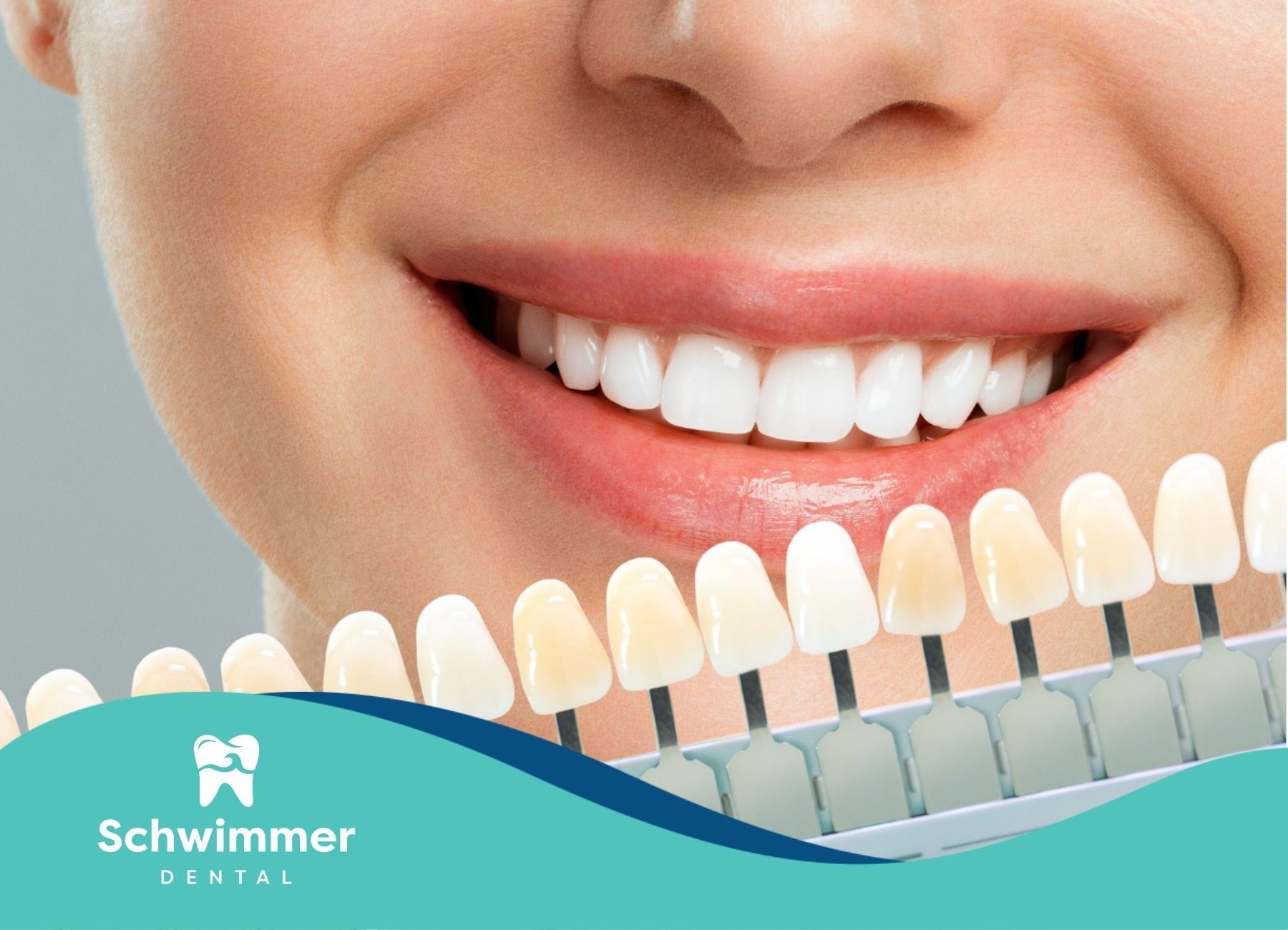Tooth Pain & Sensitivity? Find Out If You Need a Root Canal
Tooth pain can be annoying, but when does it become a serious problem? A dull ache or occasional sensitivity may be manageable, but persistent pain, swelling, or a discolored tooth could mean something more concerning—like an infection that requires a root canal. The sooner you recognize the symptoms, the sooner you can get relief.
One of our patients, Susan (fictitious name used), learned this the hard way. She had been dealing with tooth sensitivity for months but assumed it was nothing serious. When she finally came in, the infection had spread, making the procedure more complex than if she had addressed it earlier. If you’re experiencing discomfort, it’s better to be safe than sorry. Here’s how to tell if you might need a root canal.
How to Know If You Need a Root Canal
Understanding the Importance of Recognizing Root Canal Symptoms
Recognizing root canal symptoms is crucial for your dental health. If you ignore these signals, you might face serious complications. Understanding what these symptoms are can not only save you from discomfort but also help you maintain your overall oral health. Being proactive about your symptoms can lead to more effective treatment options.
Signs That Indicate You May Need a Root Canal
Several key indicators suggest that you may require a root canal procedure. Here are some of the most common signs you should watch for:
- Severe Tooth Pain: Persistent pain that doesn't go away can be a clear sign.
- Sensitivity: Experiencing prolonged sensitivity, especially to hot or cold, can indicate nerve damage.
- Swollen Gums: Noticeable swelling around the affected tooth may signal infection.
- Tooth Discoloration: A darkened or discolored tooth often suggests an underlying issue.
- Pimple on the Gums: A pimple-like bump on your gums may contain pus, indicating infection.
Learning to recognize these symptoms can help you take the right steps toward addressing any dental issues. Maintaining open communication with your dental professional about these signs will lead to better outcomes and healthier teeth in the long run.
Pain Signals
When it comes to identifying potential root canal symptoms, paying attention to pain signals is crucial. Your body's way of communicating distress can often point to underlying dental issues that need attention.
Here are some specific signals you should be aware of:
Unrelenting Tooth Pain
If you experience constant, throbbing pain that just won't go away, it's time to take notice. This type of persistent tooth pain is often a clear indication that there may be something more serious going on inside your tooth. The pain can vary in intensity and may worsen at night or when you lie down.
Sensitivity to Hot or Cold
Have you noticed heightened sensitivity to hot or cold drinks or foods? When consuming icy cold beverages or hot meals causes discomfort or sharp pain, this could be another sign. Such sensitivity might suggest that the nerve inside the tooth is affected, which is a common symptom prompting the need for a root canal.
Pain When Chewing or Applying Pressure
Experiencing discomfort when you chew or when pressure is applied to the tooth can be a significant signal. If you find yourself avoiding certain foods or feeling pain during normal chewing activities, this symptom could indicate damage to the tooth's nerve or pulp, making it imperative to consult with a dental professional.
Recognizing these pain signals is essential for maintaining good oral health and addressing potential issues before they escalate. If you find yourself experiencing any of these symptoms, it might be time to have a chat with your dentist. Your teeth deserve the best care!
Visual Clues
Recognizing visual signs can be crucial in determining whether you might need a root canal. It's vital to pay attention to changes in your mouth and teeth.
Here are some key visual clues to watch for:
Swollen Gums
Swelling around your gums can signal that something is seriously amiss. When the pulp inside your tooth becomes infected, your body's response may be to swell the surrounding tissue.
This swelling can be localized around a specific tooth or may occur throughout the gum line. Redness and tenderness may accompany the swelling, indicating an underlying issue that requires attention.
Darkening or Discoloration of the Tooth
A change in the color of your tooth can be a significant red flag. If a tooth appears darker or has an unusual discoloration, it may signal nerve damage or infection.
This discoloration is often due to decay or trauma that compromises the health of the dental pulp. If you notice this change, it's essential to consult with a dental professional to assess the situation.
Pimple on the Gums
A pimple-like bump on the gums, often referred to as a dental abscess, can be a strong indication of root canal symptoms. This bump may be filled with pus and can be painful or tender to the touch. It usually indicates that an infection has developed and could be causing pressure beneath the gums. If you spot this symptom, it's crucial to seek prompt dental care to address the potential infection.
Overall, being vigilant about these visual signs can help you identify root canal symptoms early. Taking action when you observe these clues can lead to more effective treatment and better oral health.
Additional Indicators
Recognizing root canal symptoms goes beyond just pain. There are several additional indicators that could suggest you may need a root canal. Stay alert to these signs as they can help you take action sooner rather than later.
Bad Breath
Persistent bad breath, also known as halitosis, can be a signal of underlying dental issues. If you have been brushing, flossing, and rinsing regularly, yet still experience foul breath, it could be related to a tooth infection or decay that might necessitate a root canal. Bacteria can multiply within an infected tooth, leading to unpleasant odors.
Prolonged Sensitivity
While many people experience some sensitivity, prolonged sensitivity to temperature changes—especially hot or cold—can indicate a deeper issue. If your teeth feel painfully sensitive for an extended period, this might be a sign that the pulp inside your tooth is inflamed or infected. Monitoring this sensitivity is crucial for your dental health.
Gum Sensitivity and Pain
If your gums feel swollen, tender, or painful, this could also be a warning sign. Gum sensitivity surrounding a specific tooth may suggest infection or decay, which may require a root canal. Pay attention to any discomfort, as prompt action can lead to better treatment outcomes.
Overall, being aware of these additional indicators can help you make informed decisions about your dental health. If you notice these symptoms, consult with a dentist in NJ to discuss your concerns and potential solutions. Your oral health is important, and recognizing the signs early can lead to effective treatment.
Addressing Your Concerns
When to Seek Professional Dental Care
If you experience any signs of dental distress, it's crucial to act quickly. You should consult a dentist if you notice persistent pain, swelling, or discoloration in your teeth.
Don’t ignore these symptoms, as they may indicate the need for a root canal. Early intervention can often lead to better outcomes and reduce the risk of complications.
The Root Canal Diagnosis Process
When you visit your dentist, they will conduct a thorough examination to assess your symptoms. This process often includes:
- Medical History Review: Discussing your dental history and any ongoing symptoms.
- Visual Examination: Checking for signs of infection, such as swelling or discoloration.
- X-rays: These images help identify the condition of the tooth’s root and any surrounding bone issues.
- Pulp Vitality Testing: This involves assessing the health of the tooth's pulp using various techniques.
After evaluating the findings, your dentist can determine if a root canal is needed.
Treatment Options and Recommendations
If a root canal is necessary, you can expect a well-outlined treatment plan to restore your tooth’s health. The common options include:
- Root Canal Procedure: This involves removing the infected tissue, cleaning the root canals, and sealing them to prevent further infection.
- Crown Placement: After the root canal, a crown may be placed on the tooth to provide strength and restore functionality.
- Follow-Up Care: Regular post-treatment appointments ensure the tooth heals correctly and any concerns are addressed promptly.
Your dentist will guide you through each step of the process, making sure you feel comfortable and well-informed about your choices.
Maintaining Oral Health
Taking proactive steps toward your oral health can significantly reduce your chances of needing a root canal. Here are some practical measures you can incorporate into your daily routine.
Preventive Measures to Avoid Root Canals
To minimize the risk of developing tooth problems that could lead to a root canal, focus on these preventive measures:
- Regular Brushing: Brush your teeth at least twice a day using fluoride toothpaste to remove plaque and prevent cavities.
- Floss Daily: Flossing helps eliminate food particles and plaque between teeth where a toothbrush can't reach.
- Limit Sugary Foods and Drinks: High sugar intake can lead to tooth decay, increasing the risk of needing more extensive dental work.
- Use Mouthwash: An antibacterial mouthwash can help reduce plaque and strengthen your teeth.
Importance of Regular Dental Check-ups
Scheduling regular dental check-ups is essential for maintaining your oral health. During these visits, your dentist can:
- Identify early signs of tooth decay or gum disease
- Provide professional cleanings to remove tartar buildup
- Discuss any dental concerns or symptoms you may be experiencing
Aim to visit your dentist at least twice a year. Consistent check-ups can help prevent issues that might necessitate a root canal.
Tips for Healthy Teeth and Gums
In addition to preventive measures and regular check-ups, consider these tips for maintaining healthy teeth and gums:
- Stay Hydrated: Drinking water, especially after meals, helps wash away food particles and bacteria.
- Quit Smoking: Smoking can negatively impact your oral health, increasing the risk of gum disease and tooth loss.
- Eat a Balanced Diet: Incorporating vegetables, fruits, lean proteins, and whole grains into your diet supports overall health, including your teeth and gums.
- Chew Sugar-free Gum: Chewing sugar-free gum can stimulate saliva production, which helps neutralize acids in the mouth and prevents decay.
Don’t let tooth pain take over your life! If you’re experiencing any of these symptoms, schedule a consultation with Schwimmer Dental today. Our expert team is here to provide gentle, effective root canal treatment to save your tooth and restore your comfort. Call now or book your appointment online to get the relief you deserve!
FAQs
How do I know if I need a root canal or just a filling?
If the pain is mild and only occurs when eating, a filling might be enough. However, persistent pain, sensitivity, or swelling could indicate the need for a root canal.
Can a root canal stop my tooth pain immediately?
After the procedure, some discomfort is normal, but root canals remove the infection and should ultimately relieve pain once healing is complete.
What happens if I ignore root canal symptoms?
Delaying treatment can lead to severe infection, abscess formation, and even tooth loss, requiring more extensive dental procedures.
Sources:
- https://my.clevelandclinic.org/health/treatments/21759-root-canal
- https://www.healthline.com/health/do-you-need-a-root-canal-7-common-telltale-symptoms
- https://pubmed.ncbi.nlm.nih.gov/36107038/
- https://www.mayoclinic.org/diseases-conditions/tooth-abscess/multimedia/root-canal/sls-20076717?s=2
- https://www.hopkinsmedicine.org/health/treatment-tests-and-therapies/root-canals



